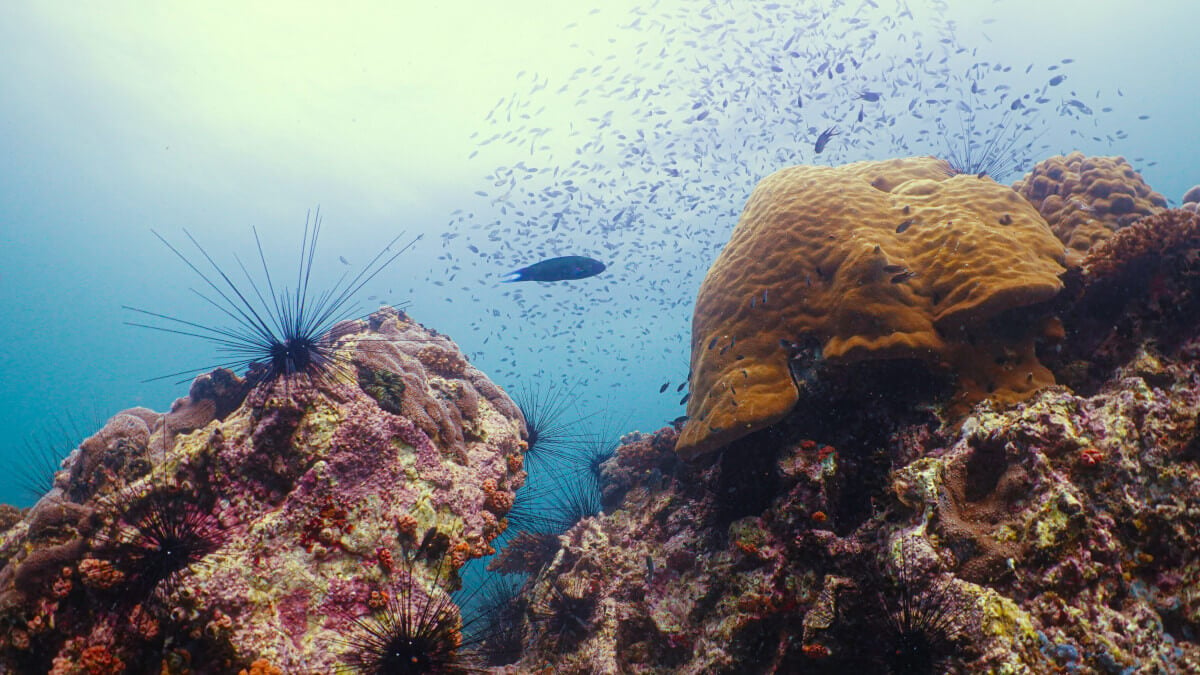What are the coral reefs?
Okay before we start talking about how sunscreen impacts the coral reefs, let's first take a look at the question - what even are the coral reefs?
Yes, the ocean may be vast, but coral reefs comprise nearly 25% of all ocean life.
Filled with clusters of coral polyps solidified together by calcium carbonate, the coral reefs are home to countless types of marine life ranging from fish to seahorses to sharks. This also makes them incredibly valuable as areas of high marine diversity, making them even more valuable than simply a habitat. It is a community.
Due to the firm position of corals and their inability to move, defense mechanisms have been developed in order to help protect them. Through this process, they have gained the ability to produce certain organisms, chemicals and substances that may be beneficial to humans. These products can contribute to medicines that are used to treat viruses (e.g. HIV) or diseases like cancer, earning coral reefs the name "medicine cabinets".
How does sunscreen impact the coral reefs?
Over the past few years, numerous studies have shown the effects of human sunscreen use on marine life. Various chemicals have been found in and around coral reefs that work to dampen the healthy effects of symbiotic algae, resulting in coral bleaching.
One chemical that is particularly contentious is oxybenzone.
Oxybenzone, is an extremely common ingredient in chemical sunscreens. This chemical has been shown to be an endocrine disruptor in fish, which means it can cause deformation, reproduction problems and perhaps can cause harm to the coral.
Beyond the reefs, sunscreen that contains the active chemical ingredient oxybenzone is absorbed into your skin. In one study, they even found that oxybenzone was absorbed in over 96% of human urine samples.
What to know when looking for reef-safe sunscreen.
When purchasing sunscreen, look for natural, mineral-based sunscreens which include non-nano zinc oxide and titanium dioxide as the only active ingredients. Avoid chemical sunscreens when possible, but please, especially near reefs. Most importantly, be a safe and smart shopper. Be aware when purchasing sunscreen based on the terms “reef safe” and “reef-friendly.” These terms are not regulated by law, which means companies can still use them even if they contain toxic ingredients to reef life.
Regulators are pushing for safer sunscreens by the coral reefs
Hawaii is the first state to ban sunscreens containing oxybenzone and octinoxate. In May 2018, the governor of Hawaii signed a ban of the sales, offer of sales, and distribution of all sunscreens including these ingredients within the island. Read research from 2015 on how the toxic ingredients in sunscreen have impacted Hawaii and the Virgin Islands here.
Additionally, the Pacific nation of Palau is the first country to ban sunscreen that is harmful to corals and sea life. With the enactment in 2018, Palau is hoping to see cleaner, clearer, and healthier waters as they move forward. Palau’s President, Tommy Remengesau said, “We have to live and respect the environment because the environment is the nest of life... we will do our part to spread the word."
Now that we have heard it, let's do our part too.
Photo by Nott Peera on Unsplash

